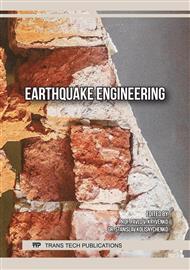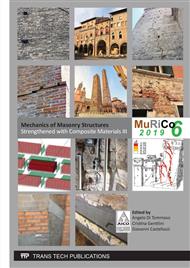p.536
p.544
p.552
p.563
p.571
p.579
p.586
p.594
p.605
Diagnosis and Structural Assessment of the Assumption of the Virgin Mary Chapel in Prague (CZ)
Abstract:
This paper illustrates the results of the activities of analysis and structural assessment of the Assumption of the Virgin Mary chapel, in Prague. The chapel, an oval-shaped building covered with a dome, was built at the end 16th century and can be considered the last example of renaissance architecture and at the same time the first example of baroque architecture in Prague: it is a significant testimony of the close connection between local artists and their Italian teachers. The building closed to visitors during the last decades for the presence of some structural damages and because severely degraded due to lack of maintenance, was reopened in the 2017 after a notable restoration process. This paper gives attention to the interdisciplinary approach used to diagnosis and structural assessment of the chapel, based on the activities of the “knowledge path,” the subsequent structural analysis and the intervention design. Particular attention was paid to the contribution of the historical review, geometric laser scanner survey and mechanical characterization of the structural materials. All these steps result necessary to identify potential vulnerabilities and to enable the understanding of the effective structural models, also in view of proposing adequate retrofit solutions. A numerical model of the chapel was prepared and calibrated. Finally, the structural assessment for the vertical and seismic loading was performed.
Info:
Periodical:
Pages:
571-578
Citation:
Online since:
August 2019
Keywords:
Price:
Сopyright:
© 2019 Trans Tech Publications Ltd. All Rights Reserved
Share:
Citation:



